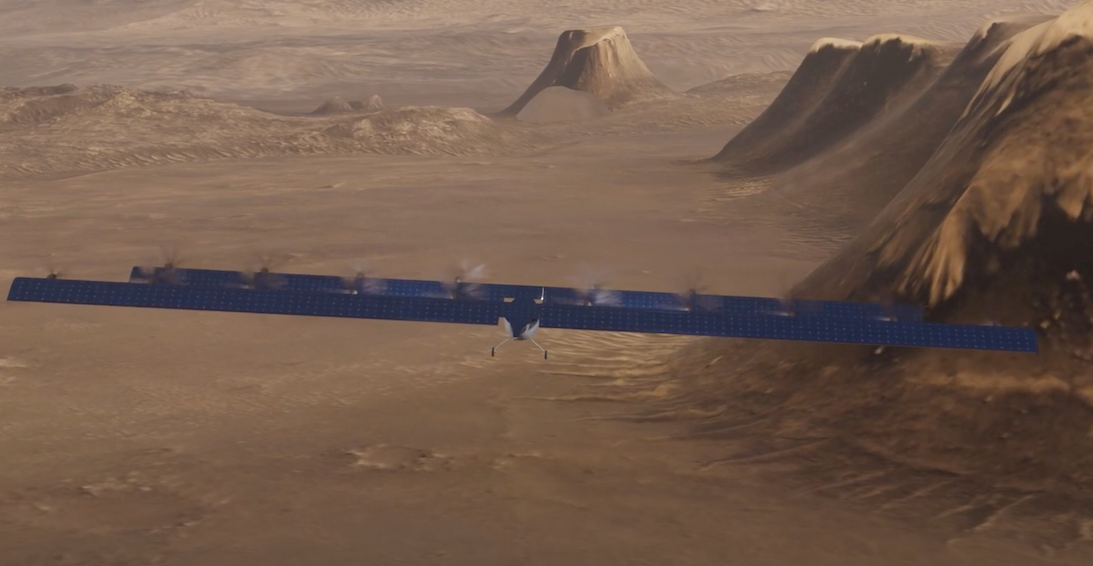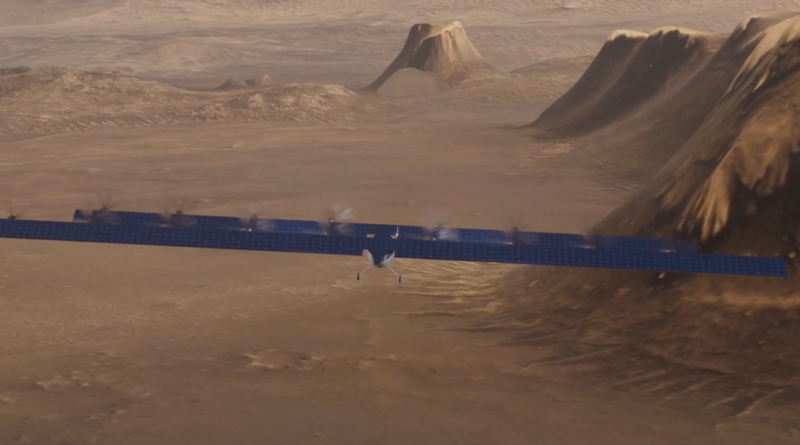Sci-fi video shows how NASA might fly a plane — yes, a plane — on Mars

One day, when a dusty Mars rover peers up at the Martian sky, it might spot a plane swooping overhead.
NASA is in the early stages of investigating the prospect of an extraterrestrial aircraft that can explore the Red Planet’s vast desert. It’s funded by the space agency’s Innovative Advanced Concepts (NIAC) program, which encourages “visionary ideas that could transform future NASA missions with the creation of breakthroughs.”
Earlier this year, the agency selected a proposal called MAGGIE (short for Mars Aerial and Ground Intelligent Explorer) as a conceptual technology that merited more funding. Now, the aviation technology company behind it, Coflow Jet, has released a NASA-approved video showing how the double-winged plane might launch to Mars and eventually begin its flights around the planet.
NASA’s interest is obvious. A Mars plane would revolutionize Martian exploration — whether it’s looking for frozen water resources, areas that could have once potentially harbored life, or places to collect scientific samples.
“We provide the possibility to move around,” Zha, the president and founder of Coflow Jet, told Mashable in January. “There are no roads there,” added Zha, who is also the director of the CFD (Computational Fluid Dynamics) and Aerodynamics Lab at the University of Miami.
The three-minute video below demonstrates how MAGGIE could launch atop NASA’s new megarocket (its towering Space Launch System). The animation then shows the craft carrying the rocket’s payload (with the packed-up MAGGIE inside) separating in space before journeying eight months to Mars. After an ambitious descent and landing (reminiscent of NASA’s successful, though daring, endeavors to land car-sized rovers on Mars), the plane settles on the desert surface.
“You can land any place you feel is interesting.”
Crucially the plane takes off vertically, like a helicopter. That’s essential on a rocky, crater-blanketed world with no runways. “You can land any place you feel is interesting,” Zha said.
To fly on Mars, a MAGGIE plane will need to overcome serious environmental challenges.
That’s because, compared to Earth, the Martian atmosphere is quite thin. Its density is about one percent of Earth’s, making it difficult to generate the lift needed for flight. Yet the MAGGIE plane’s narrow double-wings are designed (conceptually) to produce many times more lift than conventional aircraft on our planet.
The plane is also specially designed for its vertical landing and takeoff abilities. The propellers are almost always facing forward, but by turning the wing flap down to 90 degrees, the airflow from the propellers creates lift. “That will get the plane up vertically,” Zha explained.
In the coming years, Zha and his team will continue to expand their Martian aviation proposal, in hopes of progressing to the next stage of NASA funding. Any such out-of-this-world plan must be realistic. MAGGIE, for example, is currently designed with about a 26-foot (7.85 meters) wingspan — so it could fit and fold inside a large rocket.
“Anything proposed to NASA has to be very, very well thought out,” Zha emphasized.


